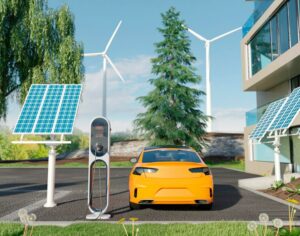Solar Vehicles: A Sustainable Future

The transportation sector is pivotal in global carbon dioxide emissions, accounting for nearly 15% of the total. The reliance on fossil fuels in transportation has resulted in adverse environmental consequences such as air pollution, climate change, and resource depletion. Researchers and engineers are exploring alternative energy sources, including electric vehicles, hydrogen fuel cells, and biofuels, to counter these challenges. Among these, solar-powered vehicles emerge as a promising solution.
Solar vehicles, essentially electric vehicles powered by solar energy, utilize photovoltaic cells to convert sunlight into electricity. This stored energy powers the vehicle’s motor, offering several advantages over traditional gasoline-powered vehicles. Solar vehicles contribute minimally to environmental degradation, producing zero tailpipe emissions. This makes them an appealing choice for environmentally conscious consumers seeking to reduce their carbon footprint.
Additionally, solar vehicles exhibit lower operating costs than traditional vehicles due to reduced maintenance requirements. They are more economically sustainable, with fewer moving parts and no need for oil changes. Charging these vehicles using sunlight further contributes to cost savings, presenting an environmentally friendly and economical alternative.
Moreover, solar vehicles contribute to energy independence by eliminating reliance on fossil fuels. This feature is beautiful to countries heavily dependent on imported oil. By harnessing solar power, these vehicles offer a sustainable and renewable energy source, reducing dependence on finite fossil fuel resources.
The design of solar vehicles is a delicate balance between efficiency, aerodynamics, and aesthetics. The integration of solar panels is crucial, with their placement and orientation impacting the vehicle’s ability to capture solar energy. Technological advancements have led to the development of flexible and lightweight panels that conform to the vehicle’s contours without compromising efficiency.
Solar vehicles have evolved significantly from experimental projects to viable transportation solutions. Key milestones, such as the “Quiet Achiever” in Australia (1982), the “Sunraycer” winning the inaugural World Solar Challenge (1987), and the “Nuna” series from the Netherlands dominating multiple World Solar Challenges, underscore the progress in this field.
Solar vehicles present a promising solution to the environmental challenges of fossil fuels. With lower operating costs, minimal environmental impact, and the potential for energy independence, these innovative machines represent a compelling alternative to traditional gasoline-powered vehicles. While acknowledging their considerable benefits, it’s essential to remain aware of potential challenges and the need for continued technological advancements and infrastructure development for widespread adoption.